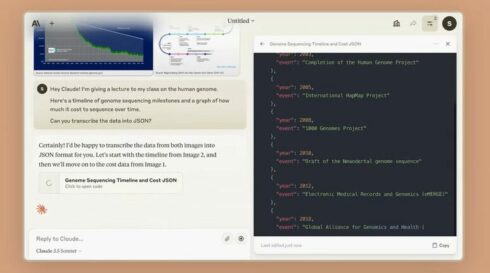


Anthropic is kicking off the Claude 3.5 model family with its first release: Claude 3.5 Sonnet.
Sonnet is the name for Anthropic’s mid-tier model; Haiku is the smallest model and Opus is the largest model.
According to Anthropic’s benchmarks, Claude 3.5 Sonnet outperforms OpenAI’s latest model GPT-4o and Google’s Gemini 1.5 Pro in a number of different areas, including coding, multilingual math, and reasoning over text.
“When instructed and provided with the relevant tools, Claude 3.5 Sonnet can independently write, edit, and execute code with sophisticated reasoning and troubleshooting capabilities. It handles code translations with ease, making it particularly effective for updating legacy applications and migrating codebases,” Anthropic wrote in a blog post.
It also outperforms Claude 3 Opus across all tested benchmarks: graduate level reasoning, coding, math problem-solving, multilingual math, etc. According to Anthropic, the new model is also twice as fast as Claude 3 Opus.
Claude 3.5 Sonnet also has improved vision capabilities, which Anthropic says is most apparent when it comes to visual reasoning tasks, such as interpreting charts and graphs. It can transcribe text from “imperfect images,” which is useful in retail, logistics, and financial services settings, the company explained.
Claude 3.5 Sonnet is available today for free with rate limits on Claude.ai and the Claude iOS app. Pro and Team subscribers can access it with higher rate limits. It’s also accessible through the Anthropic API, Amazon Bedrock, and Vertex AI.
Claude 3.5 Haiku and Opus are expected later this year, but specific dates have not been announced yet.
In addition to releasing this new model, the company also announced Artifacts on Claude.ai. Artifacts are created when a user asks for generated content, like code snippets, text documents, or website designs, and will appear in a new window next to the conversation.
According to Anthropic, the goal with Artifacts is to create a “dynamic workspace where they can see, edit, and build upon Claude’s creations in real-time, seamlessly integrating AI-generated content into their projects and workflows.”
You may also like…
Anthropic’s Claude gains ability to use external tools and APIs
Anthropic reveals the latest generation of Claude AI models
Safe AI development: Integrating explainability and monitoring from the start

